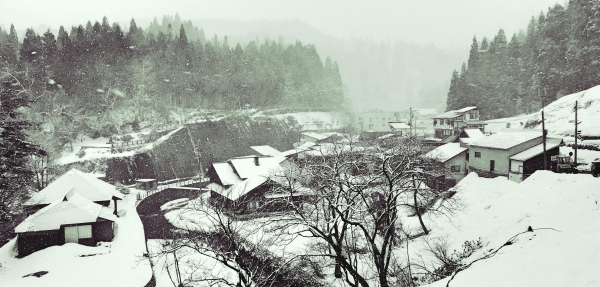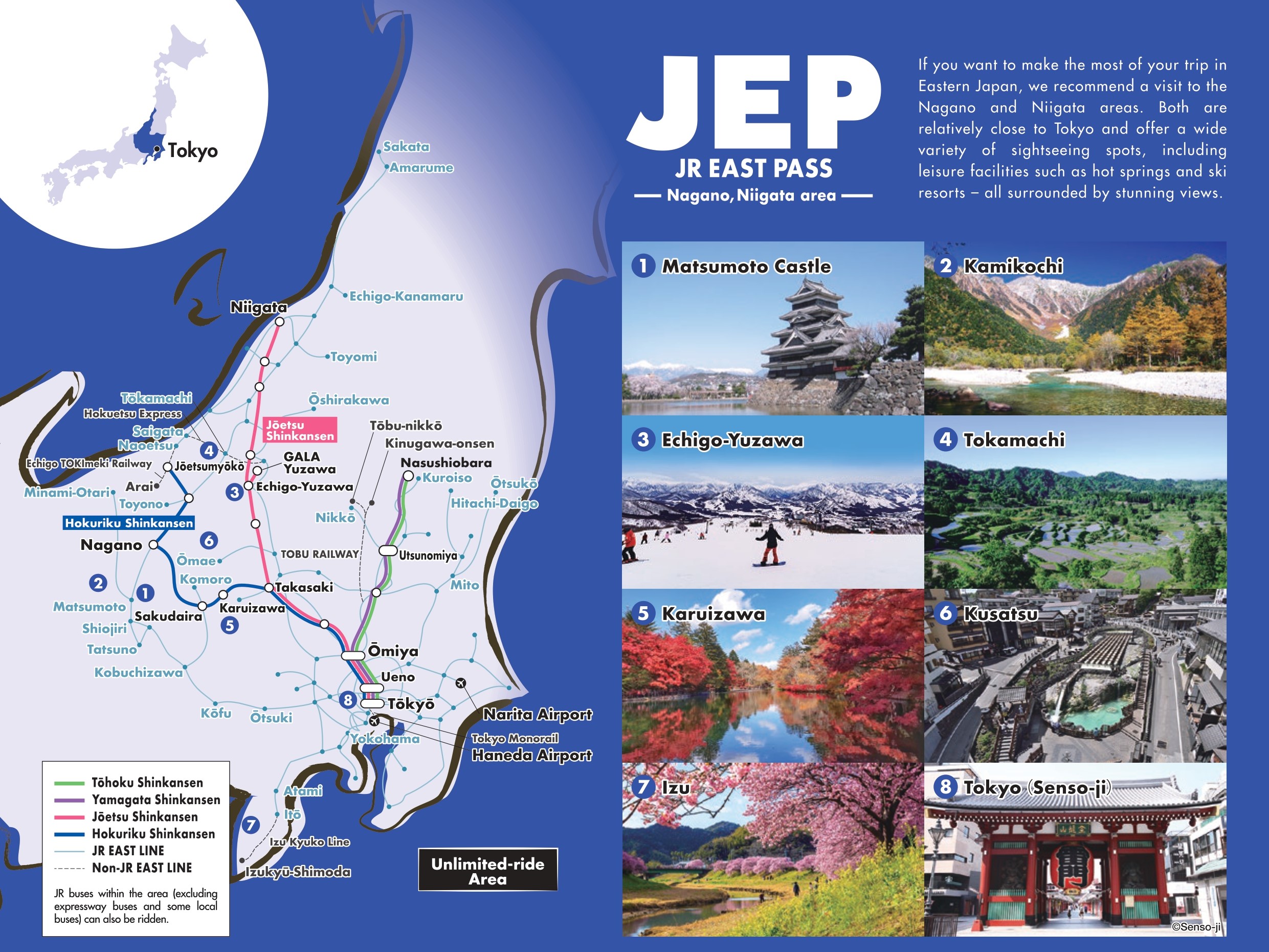Hot spring specials: Nozawa & Ginzan!

One of the reasons peopleーboth first timers and repeat travellersーhead to Japan is for their hot springs (温泉 onsen). Dipping into natural spring water and gazing at the panoramic view in the surroundings is something that captivate both local and foreign visitors. As a Singaporean, I also fancy paying a visit to a hot spring in Japan; it’s a novel experience that I can never experience here in Singapore. Plus, hot springs are a year-round affair, whether it’s during the warm summer or the cold winter. It’s always a good time to experience it regardless of the season. Like most other people, I personally think the best season for hot springs is winter. Nothing beats immersing the lower half of your body in hot spring water, while your upper half basks in the chilly snow.
When it comes to hot springs in Japan, several usual suspects come to mind for the average traveller. Usual popular hotspots for hot springs in Japan, especially for first timers, include Hakone in Kanagawa, Noboribetsu in Hokkaido, and Beppu in Oita. However, the seasoned traveller would tell you that some of the best hot springs in Japan can also be found in eastern and central Japan! To show you what I mean, let me introduce you two hot spring towns that are best visited in winter.

Nozawa Onsen. (Image credit: JR East / Nazrul Buang)
Nozawa Onsen Ski Resort (野沢温泉スキーリゾート)
Don’t let the name fool you: although it bears the name ‘ski resort’, it’s also a hot spring resort. Located in the northern prefecture of Nagano, this sleepy village has turned into an international ski resort catering to both local and foreign visitors. It attracted global attention more than twenty years ago, when Nagano hosted the 1998 Winter Olympics. Since then, the village has gradually transformed into a ski enclave, boasting many ski lodges, hotels, and restaurants and bars with international menus written in multiple languages.
Nozawa is split into two sections: one is the Nozawa Onsen Ski Resort and other, sitting at the base, is the Nozawa Onsen hot spring town. It is a nostalgic and rustic town that transports visitors back in time to the Edo Period. Lining up the streets are public bathhouses, traditional inns (旅館 ryokan), restaurants and bars. The bathhouses are free to use for the public, but donations are more than welcome to keep the bathhouses running.

Public bathhouse. (Image credit: JR East / Nazrul Buang)
The first time I went there, I was fascinated by the sheer juxtaposition of the village. On one hand, you have the ski resorts and neighbouring bars and restaurants that cater to the international clientele. It starkly reminded me a lot of Niseko in Hokkaido: a ski community with an ecosystem to call its own. On the other hand, there is the hot spring that harkens back to the historic tradition of public bathhouses, amenities that were a vital feature to the local communion. I highly recommend paying a visit to one of their public baths (外湯 soto-yu); there are more than 10 in Nozawa Onsen, and if you can visit all of them, more power to you! For more details on these public baths, click here (in Japanese only).

Ski lift at Nozawa Onsen Ski Resort. (Image credit: JR East / Nazrul Buang)

Sunset at Nozawa Onsen Ski Resort. (Image credit: JR East / Nazrul Buang)
How to get to Nozawa Onsen from Tokyo
One of the main perks of Nozawa Onsen is its proximity to Tokyo, making it a convenient getaway from the big city for those seeking some hot spring (or even skiing) experience. Here’s how you can get to Nozawa Onsen:
① Take the Asama or Kagayaki bullet train on the Hokuriku Shinkansen Line (北陸新幹線) from JR Tokyo Station (JR東京 Tōkyō-eki) to JR Nagano Station (JR長野関 Nagano-eki). From JR Nagano Station, take the Iiyama Line (飯山線 Iiyama-sen) to JR Iiyama Station (JR飯山駅 Iiyama-eki). This train journey will take almost 2 hours 30 minutes and costs ¥8,890 per adult, with seat reservation. Or, you can take the Hakutaka bullet train from JR Tokyo Station straight to JR Iiyama Station. This way, the journey takes barely 1 hour 45 minutes and costs about ¥8,780, with seat reservation.
(INSIDER TIP: if you have the JR East Pass (Nagano, Niigata area), this train ride is free for either modes of train travel!)
② From JR Iiyama Station, you can take the Nozawa Onsen Liner bus to Chuo Terminal. The bus journey takes only 20 minutes and you can refer to the bus schedule here. The bus fare is ¥600 yen adult. And that’s it!
Ginzan Onsen (銀山温泉)
Translated as ‘Silver Mountain Hot Spring’, Ginzan Onsen is a secluded hot spring town deep in the mountains of Yamagata Prefecture in the region of Tohoku. What used to be a silver mining town, it has gradually transformed into one of the most picturesque hot spring towns in Japan. The town is lined with traditionally designed hot spring inns, invoking a nostalgic style of a long-gone era. On top of lodgings with hot springs, there are also bathhouses and a foot bath (足湯 ashiyu) open to the public.

Ginzan Onsen from afar. (Image credit: JR East / Nazrul Buang)
I got to visit this place in February this year, and I was mesmerised the first time I laid my eyes on it. It seems like a huge painting, especially when pictured against the backdrop of drizzling snow. Plusーand this is for Studio Ghibli fansーGinzan Onsen is the main inspiration behind the cinematic marvel "Spirited Away" (千と千尋の神隠し Sen to Chihiro no Kamikakushi), one of renowned director Miyazaki Hayao's greatest works. It feels like stepping like a magical wonderland, and it’s something that no photograph can capture and explain.

Ginzan Onsen before sunset. (Image credit: JR East / Nazrul Buang)

Ginzan Onsen after sunset. (Image credit: JR East / Nazrul Buang)
How to get to Ginzan Onsen from Tokyo
Ginzan Onsen is in the secluded mountains of Yamagata Prefecture, so it takes a bit of time to get there from the city. Here’s how you can get there from Tokyo.
① Take the Tsubasa bullet train on the JR Yamagata Shinkansen (JR山形新幹線 Yamagata-shinkansen) from JR Tokyo Station (JR東京 Tōkyō-eki) to JR Oishida Station (JR大石田駅 Ōishida-eki). The journey takes around 3 hours 20 minutes, and costs ¥12,840 per adult, with seat reservation.
(INSIDER TIP: if you have the JR EAST PASS (Tohoku area), this train ride is free!)
② At JR Oishida Station, take the bus at the station departing for Ginzan Onsen. The bus departs every 60–90 minutes, and the journey takes 35 minutes. The bus fare is ¥710 per person for one way.
There are many other amazing hot springs in Tohoku, and here I introduce only two of them. It is in this region where you can get the hidden gems of hot springs, most of them tucked in secluded areas and rewarded only to those who ventured out to find them. For these places, I highly recommend using the JR EAST PASS (Tohoku area)/JR EAST PASS (Nagano, Niigata area); it’s the ticket to your hot spring adventure!
JR EAST PASS (Tohoku area)

The new JR EAST PASS (Tohoku area) and where you can use it. (Image credit: JR East)
The JR EAST PASS (Tohoku area) is an affordable pass that offers unlimited train rides on JR East lines, including bullet trains, within the valid area for 5 consecutive days. It's ¥30,000, making it much cheaper than a round-trip train fare between Tokyo and Akita (approximately ¥36,920). Pass holders can also reserve seats online for up to a month in advance for free on the JR-EAST Train Reservation.
JR EAST PASS (Nagano, Niigata area)

The new JR EAST PASS (Nagano, Niigata area) and where you can use it. (Image credit: JR East)
The JR EAST PASS (Nagano, Niigata area) is an affordable pass that offers unlimited train rides on JR East lines, including bullet trains, within the valid area for 5 consecutive days. It's only ¥27,000, making it a considerable option for rail travellers. Pass holders can also reserve seats online for up to a month in advance for free on the JR-EAST Train Reservation.

The JR-EAST Train Reservation. (Image credit: JR East)
Header image credit: JR East / Nazrul Buang




